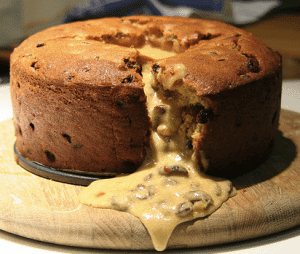Play it slow. Feel every beat. Subdvide. Hear every note. Concentrate on every single detail. There are dozens of different ways to describe the process of slow practice, yet it seems that the majority of successful musicians in any genre are saying “practice slowly!”
Every teacher that I’ve ever had, from classical players to lead trumpet players to accomplished improvisers, has stressed the importance of focused slow practice. I’ve heard it in masterclasses, I’ve read about it in books, and I’ve watched it in video clips.
It doesn’t matter if you’re working on the Mendelssohn Violin Concerto or figuring out how to solo over Confirmation, s-l-o-w p-r-a-c-t-i-c-e is oddly enough the quickest way to your goal. Check out the great Itzhak Perlman discussing the benefits of slow practice:
I guess it makes sense, right? The slower you go and the more time you have to process information, the easier it is to learn something. And the faster you learn something, the more efficient you’ll be at improving and achieving your goals.
There’s a sort of contradictory, Yin and Yang quality to all of this that you have to come to terms with. To play fast, you must practice slowly. To play the high notes, you must first master the low notes. To innovate you must assimilate the past. These phrases are easy to remember and have a nice ring to them, but practicing in this fashion is another story.
Number one, it’s counter-intuitive and two, it’s flat out hard to do. We want to play fast right away, we want to improvise great lines right away, and we want to go right for the high notes. We want to dazzle audiences from our first notes and in turn we spend all our time practicing this “hard stuff.”
“Slow and steady wins the race”
It’s a phrase that’s cliche and overused, but above every other method out there it works. In whatever field you find yourself, slow and focused practice remains one of the most effective forms of learning and improving. Period.
When you are performing or improvising music, there is something about a slow tempo that makes you focus your attention and zero in on the details. And what’s more, it can point out your flaws and shortcomings within seconds. Have you ever tried to soloing over a ballad or a really slow blues?
It’s one of the toughest things to do as an improviser. Forget playing Cherokee or Giant Steps at 400, playing multiple choruses of a blues at quarter note = 50 is much harder.
You see, the faster a tune is, the easier it is to fake it. Just play some chord tones or follow the guide tone lines of the progression and you’ll sound like you know what you’re doing.
However, slow down that tempo and you’re confronted with these long stretches of major, minor, and dominant chords. Playing a few chord tones or scales isn’t going to cut it. At a slow tempo a wrong note lasts forever, it’s exposed and painfully obvious.
A different type of slow
OK, so you’re convinced about the benefits of slow practice and as an improviser you’re ready to get into the practice room, but hold on for a second…where do you even begin?
Slow practice is self-explanatory when it comes to working on technique, ear training, instrumental etudes or even those tricky bebop melodies that you’re trying to get under your fingers. Simply slow down the tempo and repeat it until you get it.
But what about when you’re practicing improvisation? (Wait…you’re supposed to practice improvisation?!)
Do you just play the tune you’re working on at a slower tempo? Do you force yourself to solo in whole notes? Do you restrict yourself to only ballads for the rest of the month?
Not exactly. If you’re planning on making headway as an improviser, on actually getting some good use out of your practice time and seeing improvement – it’s time to redefine slow.
Slow practice doesn’t only have to refer to tempo, it can refer to harmonic motion as well. Slow down and focus on each individual chord of the progression for an extended period of time.
Most of the time when we try to learn a tune, we try to tackle the whole tune at once – 12 bars, 32 bars. Start at the beginning and go to the end. If something didn’t sound right, back to the top and try it again. However, we are allowed to slow down and prolong the movement of those chords. It’s not cheating if we focus on one or two chords for multiple measures at a time.
Give your self a chance to hear the sound of the chords, to hear the ideas that are actually coming from you organically, to not be rushed and forced to play technique or licks to get by – in fact make a rule here: no licks, you have to actually improvise!
Beware of Making Bad Cake
What?!
Alright, let’s pause for a second to make a quick analogy.
Let’s say you find yourself in your kitchen one afternoon and you suddenly, for some strange reason get this uncontrollable urge to eat cake. In your mind you see rows professional cakes in a bakery case, fluffy and topped off with waves of frosting. But, you don’t have any cake around and because you are so badly in need of cake you don’t have time to look up a recipe.
So you’re just going to wing it and use your memory, what could go wrong?
“OK, cake, cake, cake…” You think back to your mother baking a cake, “There’s flour, sugar, maybe some eggs…was there butter?? Whatever, throw it in, this cake is practically making itself! In to the oven it goes.
Baking isn’t that bad after all. However, 20 minutes later you open the oven to a massive disaster. Complete failure. Ok, no big deal, the next time will be better. Back to the mixing bowl and into the oven one more time…
This time your cake is even worse, not even edible! Can you see a pattern developing here? You can try as many times as you like, but if you don’t know exactly what you’re doing, it’s going to be a disappointment every time.
The crux of the matter is that baking is an exact science. You need specific ingredients in specific proportions to create a successful cake. You can’t just pick random ingredients or guess the measurements if you want come out with something that is half way edible.
No matter how you look at it, there are certain elements that need to be present for your cake to work. You can try hundreds of times, even thousands, but if you’re still missing those key ingredients in the right measurements, your cake is not going to work.
This scenario probably sounds ridiculous, no one in their right mind would try to bake like this, yet it’s the exact method that many musicians are using to practice improvisation. Guess and try again. Turn on a play-a-long track and try to improvise over the chord progression to a tune for hours at a time.
Until you learn the “recipe”, until you learn how to hear each chord and have developed language over those sounds, you’re not going to get your desired result. You’re still just guessing and ending up with a bad cake, every single time.
It’s not fun to make a bad cake and it’s even worse to be served bad cake, just like its not fun to hear a bad solo and even more painful to find yourself struggling through a chord progression in front of an audience. So stop guessing and making bad cake!
You’d never try to make a cake with random guesswork, but take a second to think about it: Are you trying to improvise like this??
Starting with ii-V7-I
One of the main reasons that learning improvisation is so difficult is that many beginners are just guessing when they improvise, throwing random notes, rhythms and scales into a chord progression. Instead of stopping and learning the specific ingredients to a successful solo, they continue to guess and hope that the next time will be the one when a great solo comes out.
The good news is that this cycle of bad practice can be fixed very quickly. You can put a stop to the random guess work of improvisation and actually start to make progress if you choose to. The solution is simple: slow practice.
When you start out from the beginning with slow practice you can get it right the first time. You don’t have to deal with constant confusion and guessing and you don’t have to spend years unlearning bad habits. From the get-go you are ingraining and reinforcing skills that you can build upon as an improviser.
First, however, we need to define what slow practice means when you practice improvisation. As an example we’ll take a standard ii-V-I progression:
This chord progression is the backbone to playing functional harmony as an improviser. Minor moving to dominant and dominant moving to Major.
The first problem many players have when working on ii-Vs is that they not only don’t have language over the entire progression, they don’t have language over the individual chords. No idea what to play over minor, dominant or Major 7 chords:
You’re just guessing and hoping that eventually the right note will come out. You’re baking that cake without a recipe and hoping that this time is the time that things turn out right.
When you can’t hear the individual chords and don’t have any language over these sounds, playing well over a ii-V is nearly impossible.
If you can only guess at these chords, playing over this progression hundreds of times, even at a slow tempo, is not going to make it better. This is where a new type of slow practice can transform your ability to improvise.
There are four components of slow practice when it comes to learning the chord progression to a tune:
1) Understand, hear, and have language for each individual chord
For each chord of that ii-V7-I progression, understand the music theory, hear the sound of the chord, and transcribe some language. Get the sound of the chord in your ear – minor, dominant 7, and Major. Each has a unique sound and established language that’s been developed in the jazz tradition.
This is the first step to slow practice for improvisation. Instead of taking the entire progression at once, only focus on one chord at a time. Slow the tempo down and take as many measures as you need on that minor chord:
Next focus of the V7 chord:
And then the Major chord:
Eventually you want to have 10 lines or pieces of language that you know for each of these sounds.
2) Isolate just two chords at a very slow tempo
Now you are going to focus only on the connection between the ii and V chord .
Listen and look for common tones, half-step resolutions, and common harmonies or scales. Explore all the possible connection points between these two sounds. Remember it’s all about slow tempo, extended harmonic time and repetition:
3) Next isolate the last two bars of the progression
Now focus on the last two bars of that ii-V7-I progression, V7 to the I chord:
Again look for guide tone lines, common chord tones, and harmonic devices and language that will connect these two chords.
4) Transcribe/ learn some language over the entire progression
Ok, now that you’ve slowed down and studied each aspect of this ii-V progression in-depth, it’s time to take a step back a hear this entire progression as one sound.
Bring together all the language and connection points that you’ve discovered in the previous exercises and apply them to the entire progression:
Because you’ve learned language for every chord and have explored the connections between minor and V7 and V7 and Major you will be much more successful at playing this progression.
Applying this practice concept to other progressions
Remember that you’ll see the most improvement by isolating a few chords at a time. Turning on a play-a-long, trying to improvise over the entire progression at once and expecting to magically improve is as ludicrous as trying to bake with random ingredients.
Keep these 3 simple steps for slow practice in mind when you are practicing improvisation over a chord progression:
1) Focus on one chord at a time
Slow down the tempo and the harmonic motion of a chord progression until you’re working on only one chord very slowly.
As you can see, you don’t have to reinvent the wheel every time you improvise a solo, the same basic chords are in every tune – Major, minor, V7, and half-diminished. Once you find language and concepts over these basic sounds you can apply them everywhere!
2) Practice the connection and movement between two chords.
Isolate these crucial spots in a progression and repeat them over and over again. It could be between a ii and a V7 chord or a I and a IV chord, whatever you encounter in the tune you’re working on. You want to be able to hear the progression, not just be stuck thinking through the progression.
3) Hear the entire progression as one sound.
After you’ve deconstructed the progression, put it back together and work on the sound as a whole. Apply the harmonic discoveries you’ve made in the previous exercises and transcribe some lines from your favorite players that work over the entire progression.
You can apply this three step practice process to any tune that you are learning or trying to improve upon. Just remember – start out slowly!
Here are a few examples of how to apply this slow practice concept to some common tunes:
Rhythm Changes
Instead of trying to work on the entire ‘A’ section at once, isolate just two chords:
Slow down the tempo and slow down the harmonic motion. And work on moving from one chord to the next:
Only take the movement from the I chord to the VI chord. Rather than giving yourself two beats on each chord to hear the progression, give yourself an entire measure to hear each chord.
Don’t move on until you are fluent and can hear the movement between the I and VI chord. When this feels comfortable, add the next chord and explore that sound and harmonic relationship. This is what slow practice means when you are practicing improvisation.
Take a few chords at a time and master them, then slowly move on until you are intimately comfortable with the entire tune. When you do this you can hear the chords going by and have language that you can use – there’s no guesswork involved!
Blues
Repeat the same steps with the blues progression. Instead of focusing on all 12 bars at once, just take the first two chords and explore that harmonic relationship.
Take your favorite recording of a blues and put it into Transcribe. Highlight the first two bars of a chorus. Slow the tempo way down, maybe quarter note = 50.
Take this simple chord movement through all 12 keys. Then repeat this process with the remainder of that blues progression.
All the Things You Are
So now let’s say you’ve got some language over Major, minor, and V7 chords and you’ve worked out some language over ii-V’s. The next step is to apply this to the tunes that you’re working on. Take the first four bars to All the Things You Are.
Instead of trying to go through the entire progression at once, take it four bars at a time. Start with the first four bars:
Master those four bars: apply language to each chord, study the relationship from one chord to the next, and hear the entire four bars as one sound or idea. Again your goal is to hear this progression not to mentally think through it.
To practice this process effectively find a recording, isolate those four measures, slow them down, and then repeat – repeat – repeat. I would find a recording that I like of the tune, highlight the first four bars, and slow it down in Transcribe:
All the Things You Are – First 4 bars Slow Practice
A recipe for musical success
Once you can hear each chord and have language over those chords you have your first ingredients. Then when you focus on two chords and study how they connect, you now know how to vary your ingredients and how to use them in the right proportion. You’ve slowed down the process and have discovered tools that you can use in any solo.
Every solo is different and can go in any direction. You can put your own spin on things, but the same basic skills or ingredients are present in everything that you play. Once you master these through slow practice, you will be playing at a much higher level.
Take a listen to your favorite players and your favorite recordings. The same musical ingredients are in every great solo. Great improvisation is not a mish-mash of guesswork and luck, it is the product of years of focused and slow practice.
Learning the recipe or slowly studying the musical elements of improvisation won’t confine you into a creative box. Instead this focused type of practice will set you free creatively and will ingrain skills that will propel you to sounding like your heroes. If you’re serious about playing this music, slow practice is definitely where you need to begin!























